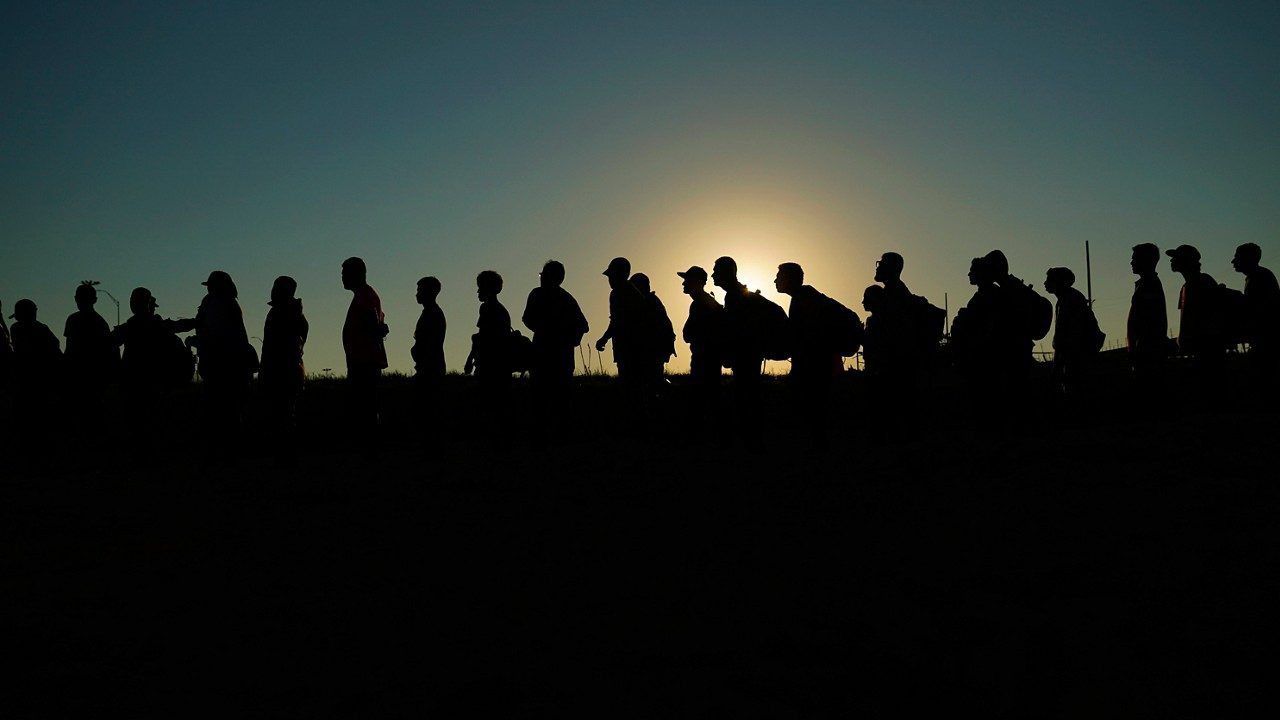There are people from all over the world who are entering the United States from Mexico. Many of them make their way up to New York City.
Outside of Central and South American countries, Russia has the most people coming into the city’s immigration court system.
Ecuador, Venezuela and Colombia are the only countries ahead of Russia, which has 7,086 new entrants to New York City immigration courts, according to Syracuse University’s Transactional Records Access Clearinghouse.
The university obtains documents and data from the federal government about immigration trends through Freedom of Information Act requests.
As the sun rises over the Gravesend neighborhood in Brooklyn, Alexey Shaposhnikov was already on his way to work.
“I literally get up every morning and say in my head, God bless the United States,” he said on the F train to NY1.
That’s because of what he experienced back at home.
Shaposhnikov is from Russia, and its invasion of Ukraine enraged him. His son is Ukrainian, and immediately Shaposhnikov joined protests, handing out flyers in St. Petersburg.
It didn’t take long for the Russian police to try to arrest him. But he said he slipped away in the crowd, escaping the potential for a lengthy prison sentence for protesting the war.
Shaposhnikov said he knew he had to leave.
In Bay Ridge, Brooklyn, Gennadii Zimin is hard at work, typing on his computer. It’s the only way he can use his voice for a fight over 5,000 miles away. He’s from Siberia, and about 15 years ago, he was part of Russia’s army.
But now he posts on social media every day, criticizing the Russian invasion of Ukraine.
The final straw for him leaving came in the fall, when he and his wife said Russians were being forced to join the fight, even being pulled out of their beds in the middle of the night.
And Zimin had no intention of ever joining. So he and his family, just like Shaposhnikov and his family, took the journey halfway around the world to Mexico to turn themselves into border patrol.
Flying to get to Mexico, strangely enough, represents one of the most straightforward paths to get into the U.S. for Russians, because there’s no visa requirement in Mexico, immigration lawyers told NY1.
These families ending up in New York City are becoming far more common.
The more than 7,000 Russians coming to New York City with new cases in immigration court is an enormous increase. That data has been tracked from Oct. 2022 through May 2023. It’s already more than doubled the count from Oct. 2021 through Sept. 2022, which was 2,963.
“We see more and more Russian refugees trying to enter the USA,” Michael Levitis said, who runs a popular Facebook group for Russians in the United States.
He also has hosted zoom seminars with an immigration lawyer catered to Russian migrants. He said the purpose is to give best practice and advice to a group desperate for assistance.
“The more the war drags on, the more you’re going to have people who want to leave,” he said.
Yakov Spektor is the immigration lawyer who said he’s seen a large increase in the Russians he represents, and that most are fleeing the war.
He’s the lawyer taking part in Levitis’ zoom seminars to answer questions in Russian, like whether fleeing to avoid being drafted is enough for asylum.
“The very fact that you are running away from mobilization, unfortunately, is not enough,” he said on the Zoom call earlier this year.
He said the key is proving persecution for being against the war, or avoiding the draft in this case.
“You need to show some political motives,” he said, citing going to protests as a prime example due to the hefty prison sentences Russia is handing out.
From Oct. 2022 through May, 92 Russians have had their asylum claims heard in New York state courts. Only three have been denied. Nationwide, 1,174 cases have been decided. About 84% of claims have been accepted this fiscal year, according to data from TRAC.
Zimin hasn’t filed his application for asylum yet, but he said he is in the process of doing so, which means they cannot apply for work authorization.
They haven’t worked at all since coming here in January, selling their home and car in Siberia to have enough savings to stay afloat to support themselves and their two young children.
Shaposhnikov has already applied for asylum and obtained work authorization. He’s working as a barista at a coffee shop in Flatbush.
While it’s different from the sales job he had in Russia, he said he’s grateful to be here.
That’s why he said on his way to work, he sometimes reads the Declaration of Independence.
“I have a right to happiness. That’s amazing,” he said with a smile.
He said this is home, and he has no intention of ever going back to Russia.







 Pkg TPS for Venezuelans CG)
